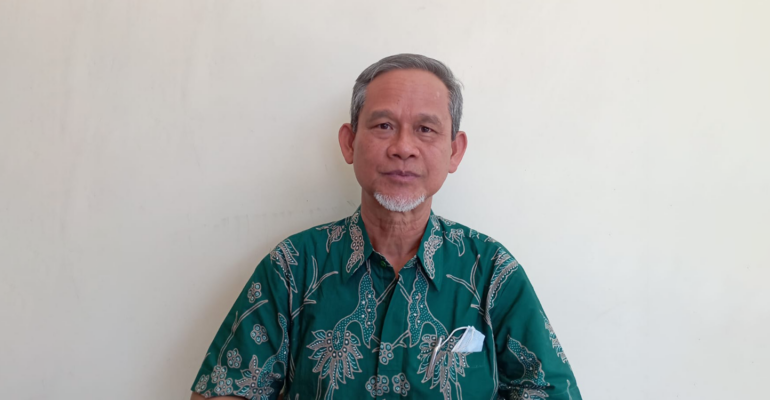IPB University Professor Optimistic to Increase National Rice Productivity Through PTB Superior Variety Innovation

Prof Hajrial Aswidinnoor, an innovator of 13 superior varieties of New Type Rice (PTB) from IPB University, is optimistic about increasing national rice productivity. However, he stressed the importance of reviving the national Community Guidance program. This was conveyed in the Press Conference of Pre Scientific Oration of Professor of IPB University held on Thursday, 19/9 online.
He added that the national guidance program for farmers in adopting PTB varieties is expected to repeat the increase in national rice productivity and production, as happened when the spread of Green Revolution (RH) rice varieties replaced local rice. The success was supported by the Mass Guidance (Bimas) program through five farming businesses.
“The use of fertilizers that are reduced from the general dose used, water management towards savings on technical irrigated land accompanied by weed control technology, and promotion of use in rainfed areas and areas vulnerable to water shortages are PTB cultivation techniques that need to be socialized,” said this Professor of the Faculty of Agriculture, IPB University.
Regarding the new type of rice varieties, Prof Hajrial explained that his team has produced innovations of 13 PTB varieties, both for irrigated rice fields, upland (upland), and tidal marshlands. Among these varieties, IPB 3S shows higher productivity than Green Revolution (RH) varieties when cultivated as recommended.
“IPB’s PTB innovation is expected to increase national rice productivity, reduce the use of fertilizers and irrigation water, and reduce costs. In addition, this innovation can reduce methane gas emissions, reduce crop losses, and increase Fe and Zn mineral content to help overcome anemia and stunting,” he said.
“For this potential to be realized widely and have a significant impact, the next challenge is that there must be a serious effort to prove and realize the potential of these PTB varieties,” said Prof Hajrial. (IAAS/HLF)



